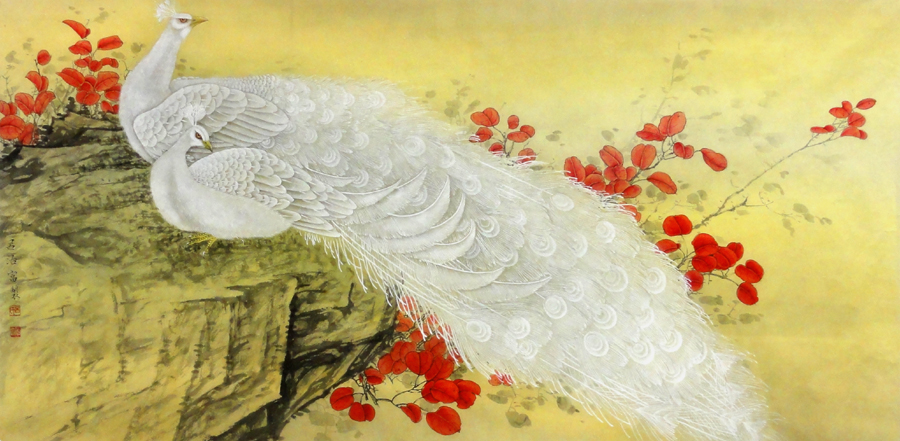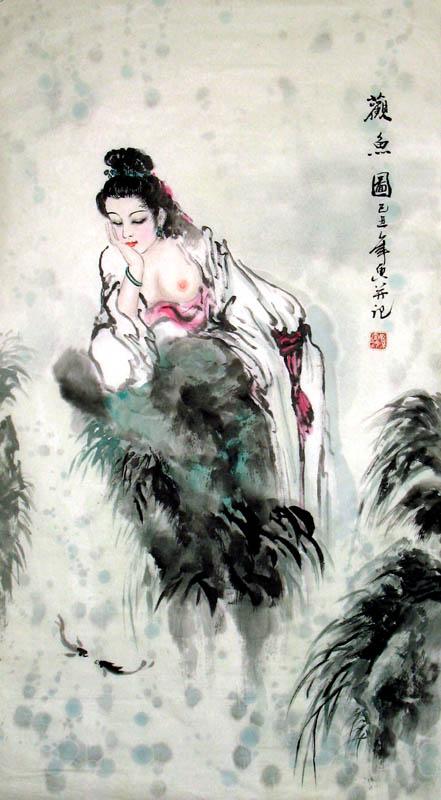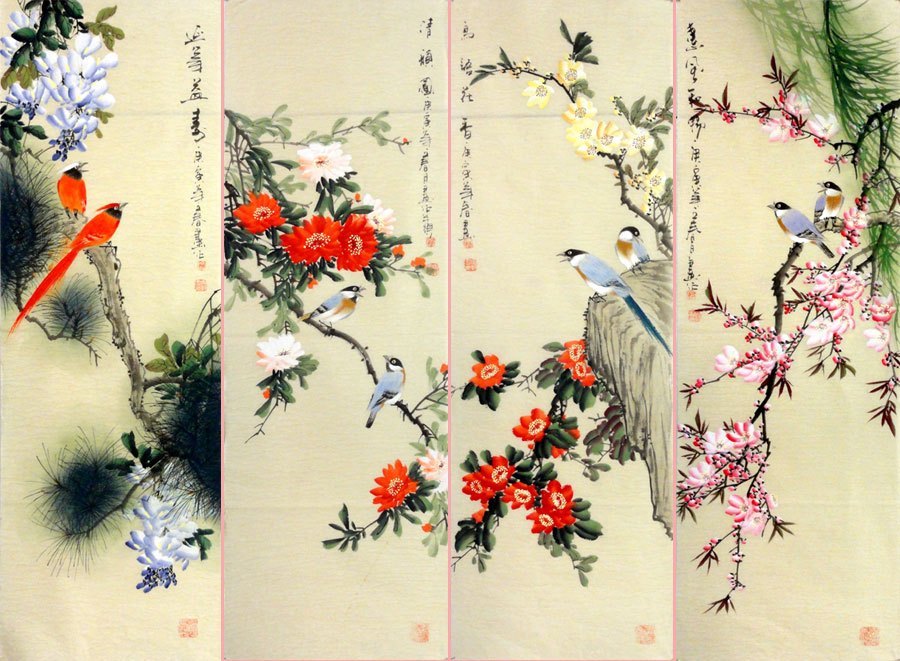Chinese Painting
Chinese Painting
Chinese painting is one of the oldest continuous artistic traditions in the world. 
Chinese Painting in the traditional style is known today in Chinese as guó huà (国画 = Chinese Painting), meaning 'national' or 'native painting', as opposed to Western styles of art which became popular in China in the 20th century. Traditional painting involves essentially the same techniques as calligraphy and is done with a brush dipped in black or colored ink; oils are not used. As with calligraphy, the most popular materials on which chinese painting are made of are paper and silk. The finished work can be mounted on scrolls, such as hanging scrolls or handscrolls. Traditional painting can also be done on album sheets, walls, lacquerware, folding screens, and other media.
The two main techniques in Chinese painting are:
- Chinese Painting: Meticulous - Gong-bi (工筆) often referred to as "court-style" painting
- Chinese Painting: Freehand - Shui-mo (水墨) loosely termed watercolour or brush painting. The Chinese character "mo" means ink and "shui" means water. This style is also referred to as "xie yi" (寫意) or freehand style.

Artists from the Han (202 BC) to the Tang (618–906) dynasties mainly painted the human figure. Much of what we know of early Chinese painting (figure) comes from burial sites, where paintings were preserved on silk banners, lacquered objects, and tomb walls. Many early tomb paintings were meant to protect the dead or help their souls get to paradise. Others illustrated the teachings of the Chinese philosopher Confucius, or showed scenes of daily life.
Many critics consider landscape to be the highest form of Chinese painting.The time from the Five Dynasties period to the NorthernSongperiod (907–1127) is known as the "Great age of Chinese landscape". In the north, artists such as Jing Hao, Fan Kuan, and Guo Xi painted pictures of towering mountains, using strong black lines, ink wash, and sharp, dotted brushstrokes to suggest rough stone. In the south, Dong Yuan, Juran, and other artists painted the rolling hills and rivers of their native countryside in peaceful scenes done with softer, rubbed brushwork. These two kinds of scenes and techniques became the classical styles of Chinese landscape painting.
Specifics and study
Chinese painting and calligraphy distinguishes themselves from other cultures' arts by their emphasis on motion, and charge with dynamic life. The practice is traditionally first learned by rote. The master showing the 'right way' do draw items, which the apprentice have to copy strictly, continuously, until the move become instinctive. In contemporary times, debate emerged on the limits of this copyist tradition within the modern art scenes, where innovation is the rule, while changing lifestyles, tools, and colors are also influencing new waves of masters.




